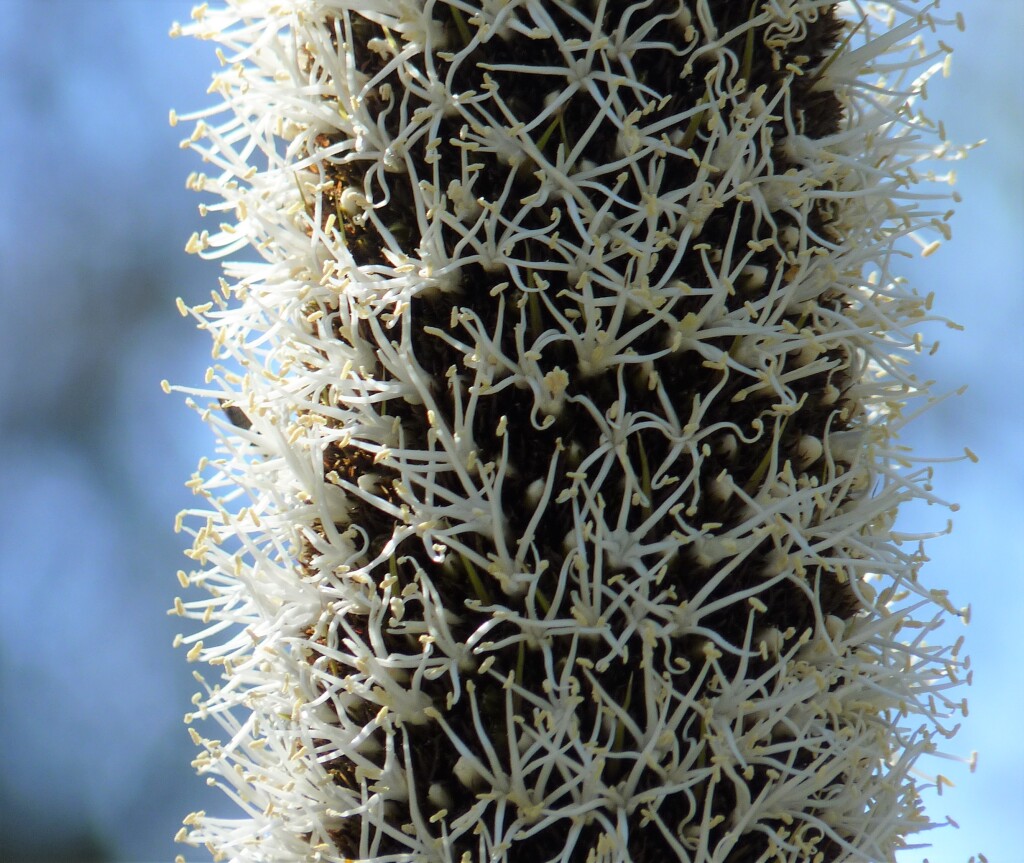Xanthorrhoea glauca subsp. angustifolia
D.J.BedfordStem up to 5 m long, sometimes branched. Leaves forming an erect tuft when young, becoming spreading, quadrate-rhombic to broadly transverse-rhombic in cross-section, 1.3–2.8 mm wide, 0.9–1.6 mm thick, blue-green to greyish, glaucous. Inflorescence with flower-bearing part 100–160 cm long, 40–50 mm diam., 1–3.5 times as long as non-flowering axis which is 65–140 cm long and 18–40 mm diam.; bracts around flowers mostly prominent, narrow-triangular, sometimes tapered at base. Sepals with apex acute, without adaxial projection; petals glabrous except for a hairy, adaxial projection form the apex.
Wim, VRiv, Gold, CVU, GGr, NIS, HNF, VAlp. Occurs on rocky northern slopes of the Great Dividing Range from Chiltern to forest south of Rushworth, with unverified records further west extending to the Grampians.
Some populations in Victoria have previously been regarded as long unburnt stands of X. australis. These two species are morphologically similar, X. glauca can only be reliably distinguished by the longer scape (>65 cm) and acute to somewhat spathulate bracts that surround the flowers. These two species appear to have different flowering cues. Xanthorrhoea glauca regularly flowers in the absence of fire. In contrast, flowering in X. australis is typically restricted to mass events in the year following fire. See Bellette (2014) for more information.
 Spinning
Spinning

